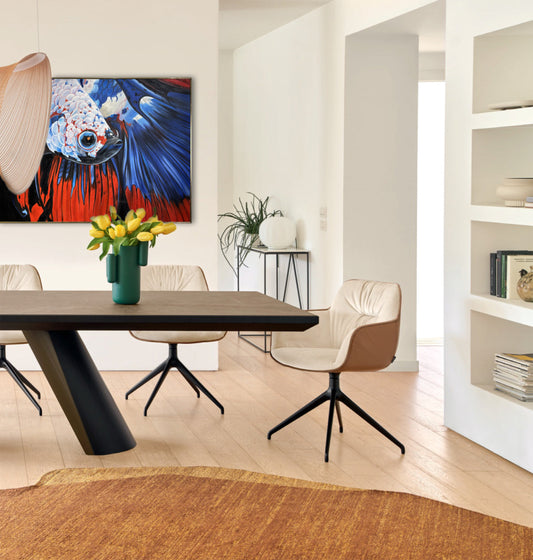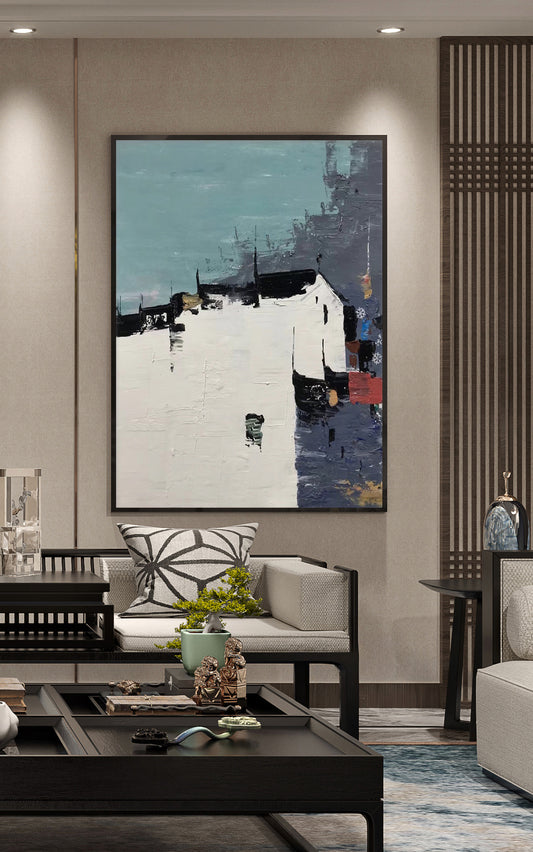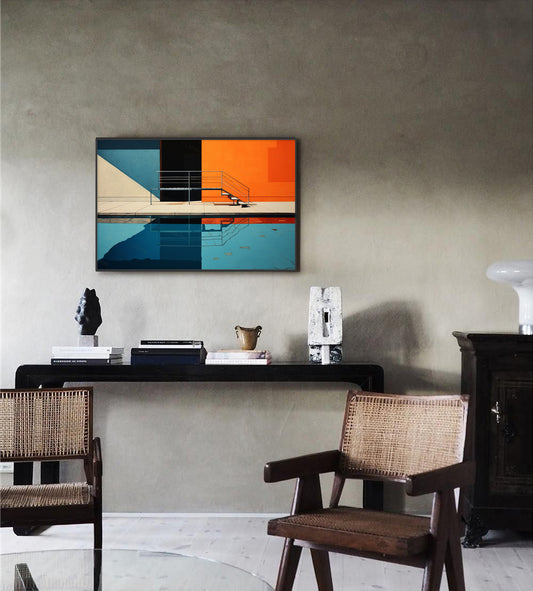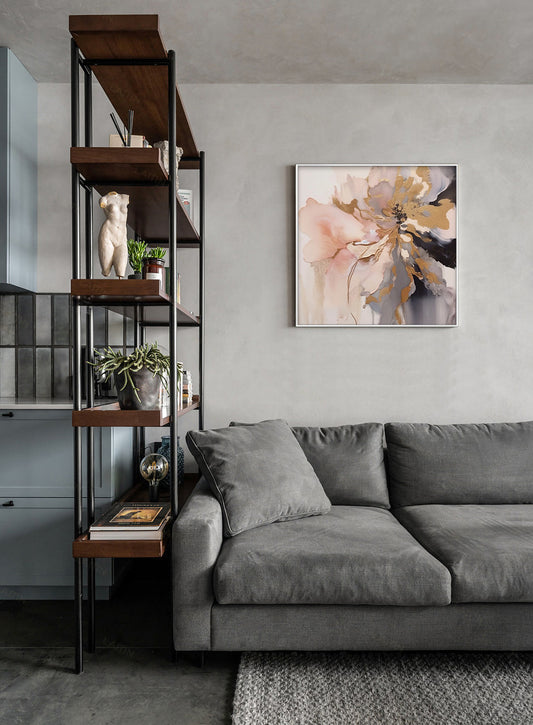
UOB Malaysia Painting of the Year 2024
The UOB Painting of the Year (POY) competition, established in 1982, is one of Southeast Asia's most prestigious annual art awards, celebrating the region's rich tapestry of artistic talent. In its 43rd edition in 2024, the competition continued its tradition of uncovering and nurturing artists from Singapore, Malaysia, Indonesia, Thailand, and Vietnam.



In 2024, the UOB Painting of the Year (POY) competition in Malaysia celebrated its 14th edition, continuing its tradition of recognizing outstanding artistic talent. The top honor was awarded to Penang-based artist Hasanul Isyraf Idris for his work titled "Durio." This intricate gouache painting depicts the life cycle of the durian tree, scientifically known as Durio, and highlights the essential role of stingless bees in its pollination process. Hasanul's inspiration stemmed from a four-year journey documenting the biodiversity surrounding his retreat studio in Perak, reflecting his deep connection to nature and its intricate processes.

The following are the winners in the respective artist category :

Hasanul Isyraf Idris
Hasanul has held solo exhibitions in Singapore, Jakarta, and New York, and his work has been featured in institutional exhibitions in Taiwan, Paris and the 13th Edition of Asia Contemporary Art Week in Dubai.
2024 UOB Painting of the Year UOB Painting of the Year Award, Established Artist Category
Medium: Guoache on paper
Size (cm): 174 x 173
The artwork features detailed drawings of the Durian (scientifically known as Durio) tree’s life cycle and highlights the important role of stingless bees in pollination. To explore plants and animals further, the artist uses a Scanning Electron Microscope to create a high-resolution scan of seeds, leaves, and butterfly eggs.
The artwork invites viewers to appreciate the slow passage of time in this remote setting, encouraging reflections on modern environmental issues, self-care, and self-awareness. The calm atmosphere evokes contemplation of life’s fleeting nature within the universe.

Hug Yin Wan
Yin Wan was awarded the first prize in Mix Media category at the Tanjong Heritage Awards in 2015, the Grand Prize in the Fine Art category of the Nando’s Art Initiative Competition in the same year. He was also awarded the 2016 UOB Painting of the Year (Malaysia), Bronze Award, Established Artist category. His works have also been exhibited in various local galleries.
2024 UOB Painting of the Year Gold Award, Established Artist Category
Hug Yin Wan Winning Title: Reflections of Water
Medium: Mixed media on plywood (Woodcut, mirror, acrylic and oil paint)
Size (cm): 61.5 x 171.5
This artwork symbolises life’s constant changes where everything flows, adapts, and transforms like water. It invites viewers to reflect on the impermanent nature of existence and discover their own insights within this concept.

Muhamad Amsyar Bin Ramly
Based in Kuala Lumpur, he has actively contributed to the Malaysian art scene since 2017 and has developed a diverse body of work across various styles and media. He received the Malaysian Emerging Artist Award (MEAA) in 2022 and showcased his first solo exhibition, Pixels at Sareng Gallery, Kuala Lumpur.
2024 UOB Painting of the Year Silver Award, Established Artist Category
Muhamad Amsyar bin Ramly Winning Title: Langit dan Bumi (Heaven and Earth)
Medium: Mixed media on canvas (Soil and acrylic)
Size (cm): 175 x 136
This work expresses the divine beauty and harmony of creation, presenting a spiritual interpretation rather than a literal portrayal of nature.

Mairul Nisa Binti Malek
Mairul explores personal narratives and socio-political themes in her work. She received the 2023 UOB Painting of the Year (Malaysia), Most Promising Artist of the Year, Emerging Artist category and has exhibited both locally and internationally.
2024 UOB Painting of the Year Bronze Award, Established Artist Category
Mairul Nisa Binti Malek Winning Title: Perepat (1996)
Medium: Mixed media on wooden box frame (Film, preserved tree root, collaged archival documents, needle, washed cyanotype, thread, and cement)
Size (cm): 147.5 x 145 (Diptych)
The diptych format features the perepat tree as a symbol of perseverance, presented in a grid and puzzle to highlight the interconnectedness and individuality. The artwork uses layered film photos, containers framing delicate materials, and archival documents stitched with red thread, illustrating the economy’s lifeblood. The yellow cyanotype mimics firefly light, while cement represents the tension between tradition and modernity.
The artist invites viewers to honour the villagers’ sacrifices and appreciate the shared humanity in diverse communities.

Zac Lee
Zac was awarded as a finalist for the Sovereign Asian Art Prize in Hong Kong in 2014 as well as the Best Theme Award at the Royal Society of Portrait Painter Annual Exhibition London in 2023. He has participated in various local and international exhibitions such as the Asia Week New York in 2015 and 2016.
2024 UOB Painting of the Year Highly Commended Award, Established Artist Category
Zac Lee Winning Title: Embrace
Medium: Oil on canvas
Size (cm): 91 x 158

Nurul Shahida Binti Ibrahim
2024 UOB Painting of the Year, Most Promising Artist of the Year, Emerging Artist Category
Medium: Mixed media on jute canvas (Thread and acrylic)
Size (cm): 126 x 95
Growing up at the foot of Mount Jerai as a farmer’s child, the artist experienced the beauty of rice fields turning golden at harvest. However, this beauty masked significant struggles from crabs, snails, and burung tiak (tree sparrow) that ravaged the crops. The artist captures the raw, enduring realities of life through grid patterns and the interplay of positive and negative spaces in green.

Ahmad Muhamad Bin Mohamed Kamal
2024 UOB Painting of the Year Gold Award, Emerging Artist Category
Medium: Mixed media on mild steel (Industrial paint and fabric)
Size (cm): 86 x 118
The artwork uses tanggam as a visual metaphor, emphasising the family unit as a crucial societal structure that is losing its significance. The combination of batik and line strokes represents the conflicts and challenges faced in fostering positive societal values.

Lee Yaw Chu
2024 UOB Painting of the Year Silver Award, Emerging Artist Category
Medium: Mixed media in wooden frame (Acrylic, paper, printing, plaster and rusting effect)
Size (cm): 85 x 73
While modern technology enables instant communication, it often lacks the emotional depth of handwritten letters. The artwork illustrates how letter writing creates meaningful connections and transforms into valuable artifacts, demonstrating the lasting impact of personal, written communication.

Aer Loo
Her artistic journey includes a residency at Bon Ton Resort in Langkawi and exhibitions at Artsinsquare Ontario online exhibit in Canada (2022), The Back Room (2023) and Cult Gallery (2024).
2024 UOB Painting of the Year Bronze Award, Emerging Artist Category
Medium: Mixed media collage on Chinese calligraphy grid paper (Embossed wrapper, inkjet print and acid free spray adhesive)
Size (cm): 167 x 52.4
Through print transfer and square cuttings on Chinese calligraphy paper, the artist transforms the boy’s silent struggles into a compelling visual narrative highlighting the resilience and humility of those in difficult situations and the invisible support they provide to society.

Emily Tan
Emily won the Judges’ Pick Award at the 2024 Mr DIY Art Competition and Best Graffiti Artwork at the 2023 #BreakFree KL Youth Street Arts Festival. She was also recognised as one of the Top 10 Bakat Mahasiswa 2023 Art Exhibition organised by the Malaysian Institute of Art.
2024 UOB Painting of the Year Highly Commended Award, Emerging Artist Category
Emily Tan Winning Title: 百家被 (Baijia Quilt)
Medium: Oil on canvas
Size (cm): 122 x 92
百家被 (Baijia Quilt) is a traditional Chinese quilt symbolising blessings for a 100-day-old child. It is made from fabrics given by relatives and friends and is believed to bring luck and protection. The artwork honours this tradition and the bond between the artist and her grandmother, celebrating the love and care embodied in the quilt’s delicate craftsmanship.
That's the line up of the 2024 competitions, and congratulations to the winner once more. The 2024 UOB Painting of the Year (Malaysia) once again spotlighted the extraordinary talents that thrive within the country’s art community. From Hasanul Isyraf Idris’s intricate “Durio,” which harmoniously merged art with ecological awareness, to Nurul Shahida Ibrahim’s thought-provoking “Baruh” that subtly unveiled hidden societal truths, this year’s competition proved that Malaysian artists are not only technically masterful but deeply connected to the narratives around them.
As these creative voices continue to resonate across Southeast Asia, the anticipation for the 2025 UOB Painting of the Year is already building. With the evolving landscape of contemporary art, themes surrounding sustainability, cultural identity, and digital transformation are expected to take center stage. Young and seasoned artists alike are encouraged to push boundaries, explore new mediums, and tell stories that challenge, uplift, and unite.
Art lovers, collectors, and creators—2025 promises to be a year of even greater imagination and impact. Stay inspired, and let the canvas continue to speak.
John CC Lim








